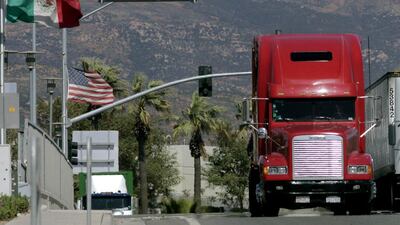“Understand the basics” and “a little knowledge is a dangerous thing” are two of those tiresome commonplaces that most people think get too much air time. They are, however, true, as was recently brought home to me in the context of the imminent introduction of VAT in the GCC.
Late last month, I took part in a couple of the panel discussions at the first GCC VAT Forum held in Dubai. It was a well-attended event, with speakers comprising chief financial officers and finance directors/managers from the business sector, regional leaders of VAT and indirect tax from the big global accountancy firms, specialist VAT tax lawyers and tax compliance software specialists. In essence, the audience heard what VAT is and how to prepare for its implementation.
While travelling after the conference, I happened on an article written in an international newspaper by David Malpass, who is described as “a senior economic adviser to the Trump campaign”. The premise of the article was that, because of its own ineptitude, the United States had recently been getting a raw deal from the rest of the world. Among examples given was the following:
“The North American Free Trade Agreement, for example, grew to 1,700 pages, yet still allowed Mexico to enforce its value-added tax on American products while exporting goods to the United States duty-free.”
This short example raises a number of points of interest, such as the relationship between free trade agreements (FTAs) and taxation, like the gargantuan size of some FTAs, but also about the fundamental principles of VAT – any VAT.
It is here that the need to understand the basics kicks in. Without, for present purposes, providing an exhaustive list, those “basics” include: (1) VAT is a tax on consumption; (2) VAT is levied on a “destination” basis; (3) VAT is a fiscally neutral tax. It is said that the tax should “flow through” the VAT-registered businesses in the production and distribution chains.
Those attending the conference, or who are otherwise educating themselves about VAT, will readily become familiar with the (1), (2), (3) just set out.
Going back to the extract from the article, it reads as though the North American FTA has allowed Mexico to do something, which it ought to have been prohibited from doing.
The proposition, however, must be checked against the VAT “basics” to ascertain its accuracy.
American products sold in the US are, self-evidently, not subject to Mexican tax, so any “enforcement” of VAT by Mexico can only be on American products imported into Mexico. In pursuance of the fundamental principle that VAT should be levied at destination – see “basic” (2), above – Mexico should apply its VAT regime to such goods. Mexico is right, not wrong, to do so.
This can be tested another way, by asking the following question: where is a product imported from the US to Mexico likely to be consumed? The answer, obviously, is Mexico. As VAT is a tax on consumption – see “basic” (1), above – the conclusion is the same: Mexico should apply its VAT to the product.
But what about the ability of Mexico to export products to the US tax-free? This seems to be held out as an intolerable state of affairs. Isn’t that iniquitous? Well, no; it isn’t.
Fiscal neutrality – see “basic” (3), above – means that the burden of VAT should be borne by the consumer, not by the businesses that produce or distribute the product. The Mexican producer/exporter will have obtained supplies (parts incorporated in the manufacture of the product, or transport and other services) that will have been taxable, and which tax it will have paid to its own Mexican suppliers (as tax on its inputs). However, as the product has been exported from Mexico, it has not been consumed there. So for the VAT to flow through the Mexican exporter’s business, the exporter must get its input tax back. Hence, Mexico should repay input tax credits to Mexican exporters. (Once in America – where the goods will, in all probability, be consumed – the relevant US (or state) tax authority can apply its tax, usually known as a “general” or “retail” “sales tax” (GST or RST).) Once again, Mexico is right to repay input tax credits to exporters.
The equation put forward by the senior Trump economic adviser is beguilingly simple: Mexican goods exported from Mexico to the US are not taxed in Mexico. US goods exported from the US to Mexico are taxed in Mexico. How unfair (to the US) is that?
But through an understanding of the basics of VAT, that can be shown to be a false parallel.
You could just as well say (but a senior economic adviser to Trump might not want to): US goods exported from the US to Mexico are not taxed in the US. Mexican goods exported from Mexico to the US are taxed in the US. How unfair (to Mexico) is that?
The correct analysis, under VAT law, is that taxable goods, despatched from one country to another are not taxable in the country of export, but are taxable in the country of import. It doesn’t matter which the countries are. That is a fundamental tenet of VAT law.
The moral of the tale is not to question the economic savvy of one of Trump’s senior advisers, but to point out that a roomful of delegates from the UAE and around the Gulf who attended a VAT conference should now have a better understanding of the basics of VAT.
Between now and implementation day(s) for VAT across the GCC, there will need to be many more roomfuls who acquire an understanding of the basics of VAT. A solid grounding in the basics will avoid the dangers of a little knowledge.
Michael Patchett-Joyce is a commercial lawyer and arbitrator based in London and the UAE
business@thenational.ae
Follow The National's Business section on Twitter

